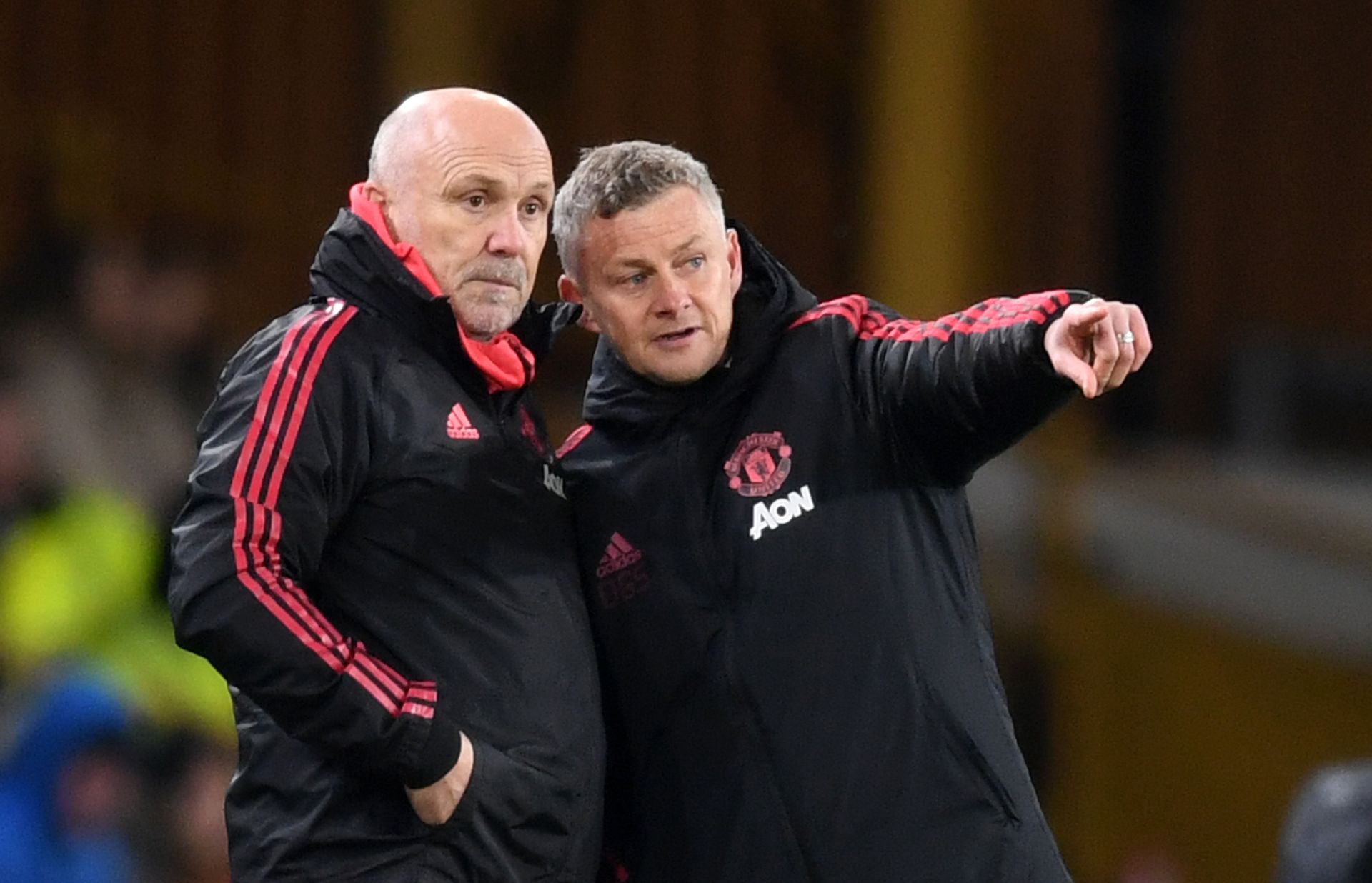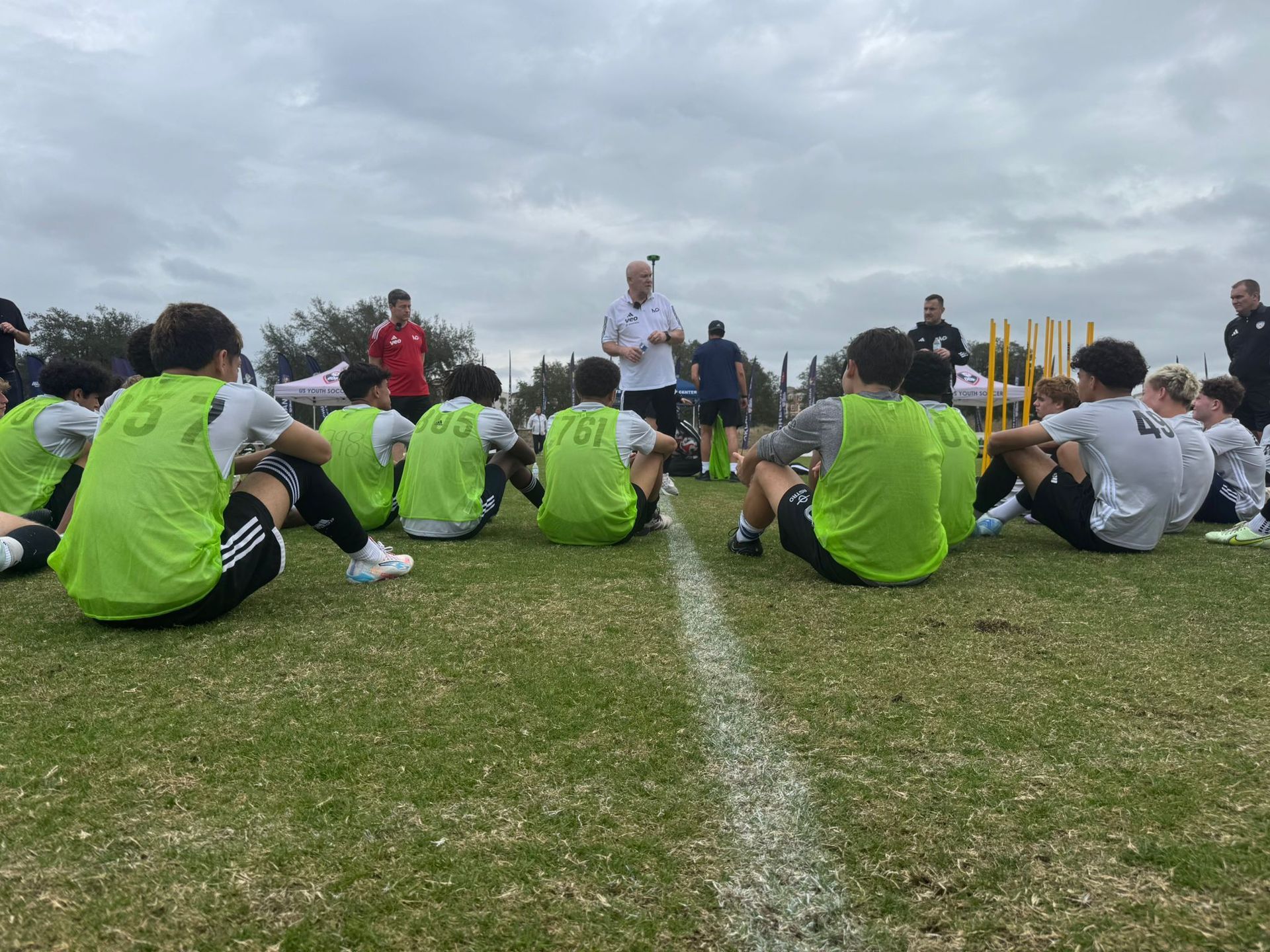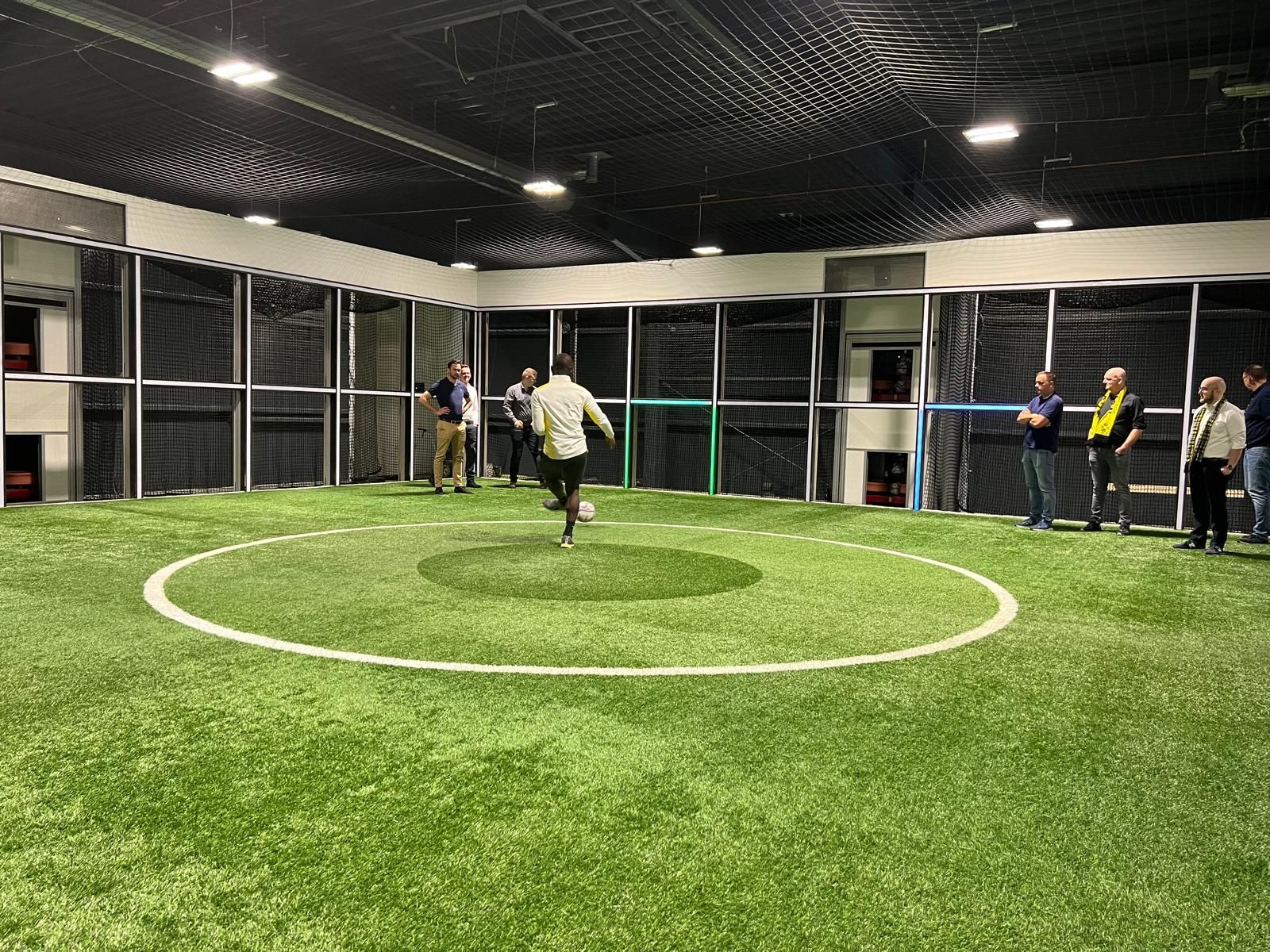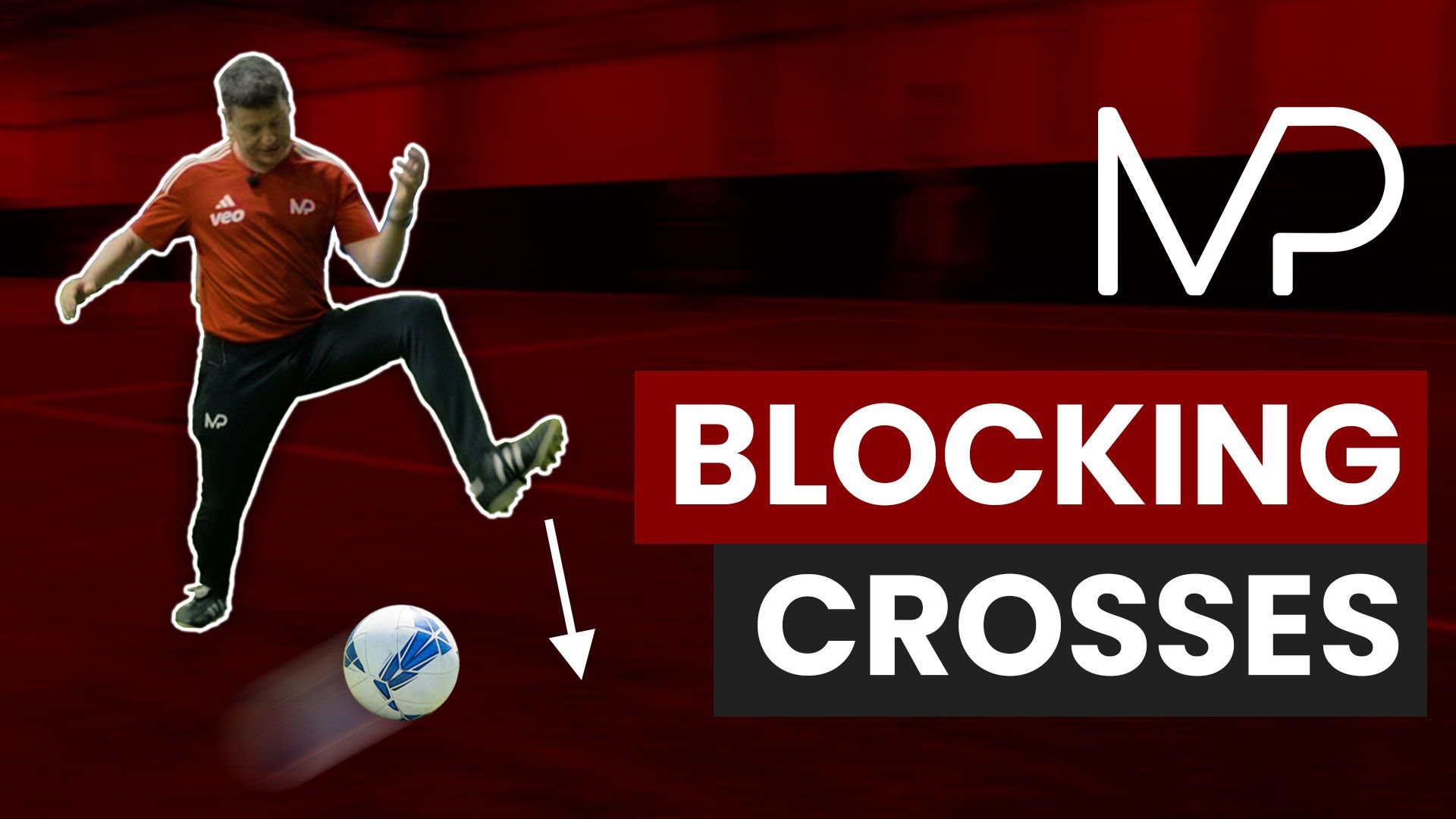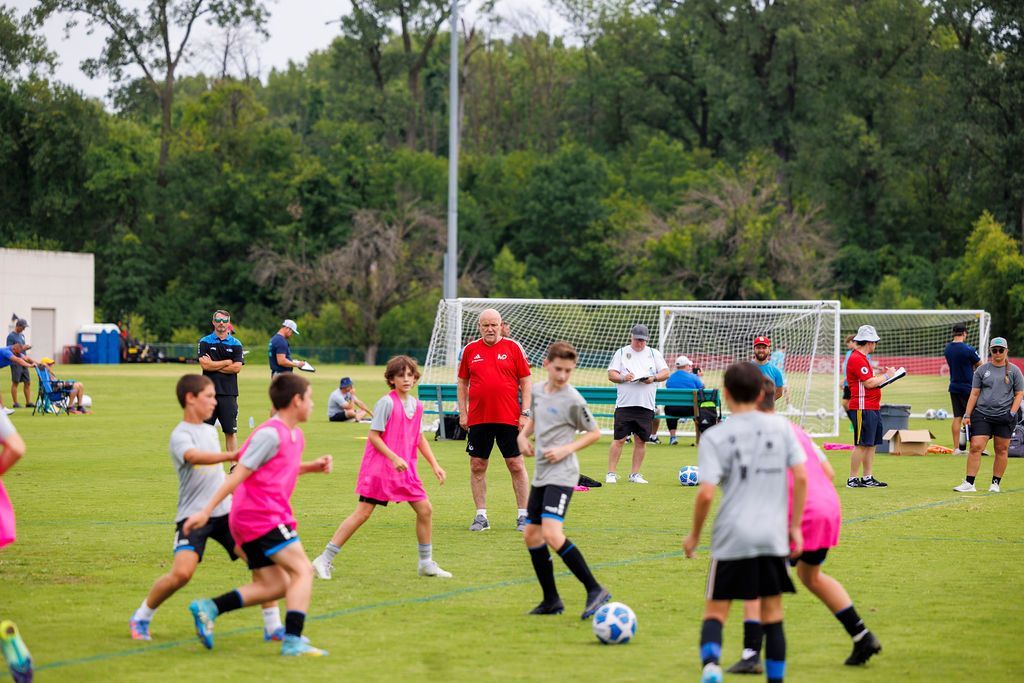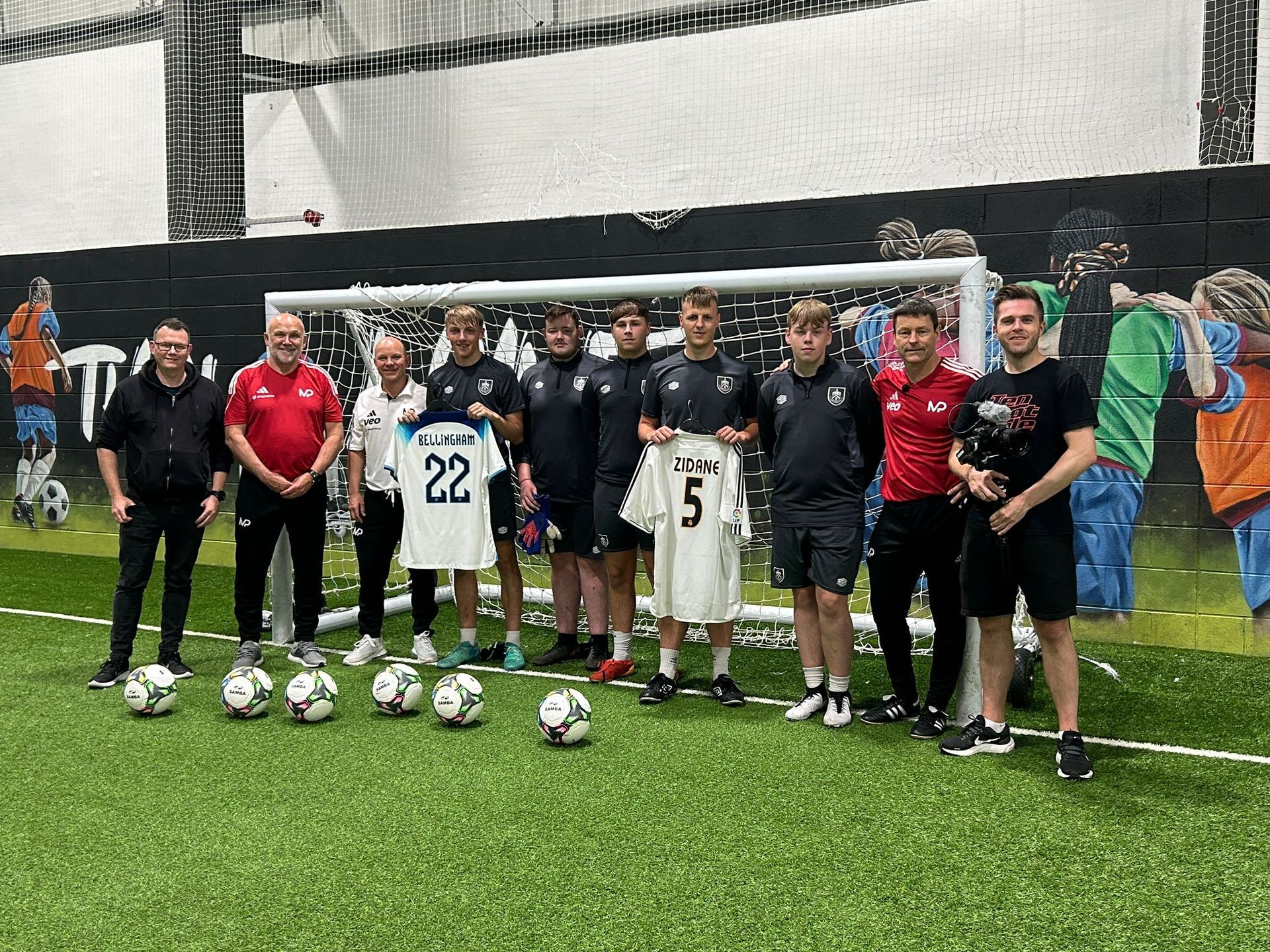Game Knowledge, Scanning and Information Processing
A much-discussed topic in modern coaching is scanning. But why do players need to do this? and Why are coaches asking players to check their shoulders and lift their heads up prior to and as they receive the football?
The art of scanning is the prerequisite to good decision making and the execution of smart, correct and prime choice actions within a game of football. If you can see what’s ahead of you and predict the future, then decision making and eventual outcomes are much more fruitful towards any process objective or goal.
But . . .
Its not quite so simple, scanning is of no use without game intelligence.
As stated in our downloadable presentation by the great Johann Cruyff, the game is played with the brain not the feet. The best midfielder around right now and current ballon d’or holder Manchester City’s Rodri is described as the best player in the world by his club manager Pep Guardiola and a supercomputer by his national team boss Luis de la Fuente.
Put simply the greatest players know a hell of a lot about the game of football, what is likely to happen and why things are likely to happen and when and how things may happen. Therefore, the much-lauded art of scanning is only of use to those players who know the game its not just a simple head rotation and gaze exercise
The below diagram is an example of how scanning and game knowledge interact as a football player goes about their business.
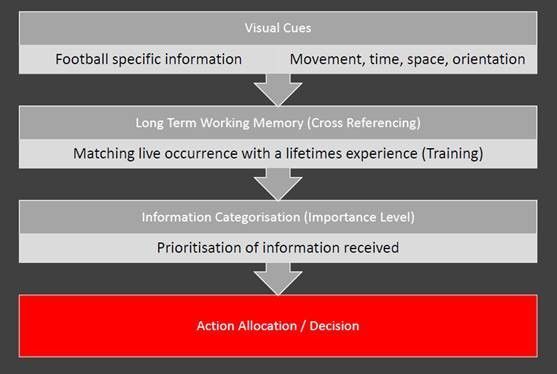
But where does this knowledge come from, is it nurture and the fabled 10,000 hours of football or deliberate practice (Academic studies suggest 15,000hrs + in this particular sport) or is it nature and therefore something certain athletes are born with, and these innate superpowers happened to be present before baby Messi walked or talked.
Both anecdotal first-hand quotes from elite players and academic studies suggest that a significant part of the magical number of hours are hours of a thoughtful (cognitive) nature.
While being on the grass and kicking a ball around in training and matches is of vast importance, so is analysing, discussing, questioning and theorising about the game and its what’s, ifs, and maybes.
This off field phenomena is also now of increasing importance at the highest levels in a world where physical exertion, match and training demands and sheer volume of fixtures is a serious cause for concern and debate. Put simply it is not that easy for managers and coaches to get their playing squads on the training ground as regular as they would like in this age where the game is a hyper commercialised product, and fixtures and travel are never ending.
So, in essence for scanning to take place, game knowledge is required, game knowledge comes from games of course but game knowledge also comes from wider cognitive and lifestyle engagement centred around the game.
As stated here in this video clip involving Jermain Defoe, ‘Young players have to watch more football.’
New PCouple this pretty nailed on necessity with the fact that Generation Z (The modern player and coach) are tech and data savvy, use short form content as a catalyst to further more detailed content consumption, and watch sport on multiple screens while seeking evidence for debate or opinion, are we now at a crossroads where cognitive deliberate practice is overtaking, (in season) or certainly becoming equal to physical practice in the greatest players quest for footballing excellence.
Putting the boots on and getting on the grass will never be replaced, let’s make that clear but even in years gone by, those working/training and playing a 37-hour week still had 131 hours left over.
These spare hours are now part of the high achievers deliberate practice and fear not it can be playful and unstructured if you wish. As long as it stimulates the brain, learning and growth will be taking place, and the art of scanning will start to assist in the realisation of the foundation and structure required for scanning to directly affect performance in in play decision making.
What is the knowledge?
Knowledge or game intelligence takes multiple formats just like in the real game, tactical in terms of movement, technical in terms of the body and the ball, and physical in terms of the bodily requirements when dealing with opponent, space or ball.
All in all the beautiful game and how elite player behaviours are often now reported really does show that it is a myriad of complexity and cerebral precision which only makes you appreciate the greatest players even more.
The enclosed educational download provides a framework for player and coach education with regard to scanning, game intelligence and improving player and coach education.
Examples utilising the likes of Lionel Messi and Rodri are drawn upon along with the pioneering research works of mikephelancoaching.com(David Horrocks), Geir Jordet and Jes Buster Madsen all utilised in terms of evidential support for the concept.
If you would like to know more with regard to player and coach education or training options for the decision-making aspect of the game and how to incorporate these into your pathways and programmes then don’t hesitate to get in touch.
